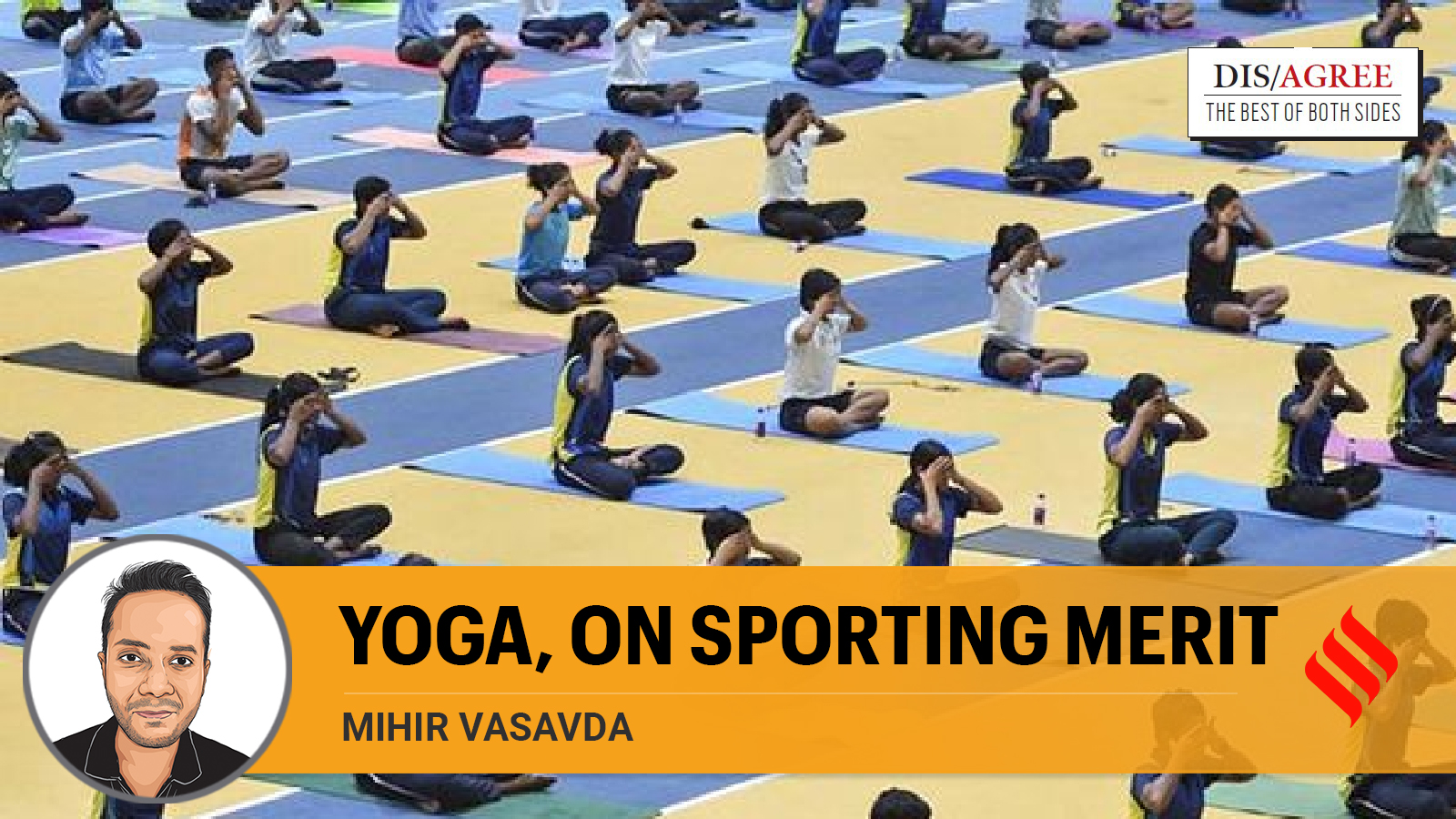
Before it became an Olympic sport, flag football was mostly restricted to gym classes across the US. It made for a perfect workout — an intense cardiovascular exercise, building balance and strength, and teaching teamwork. Nine months ago, this little-known sport with, to quote The New York Times, “recreational, amateur, intramural-type reputation” made it to the 2028 Los Angeles Games.
Xiangqi, also called Elephant chess, is a “sport” largely played in Chinatowns across the world. Last year, it was a part of the Asian Games — only the second time this obscure sport made it this far. Unsurprisingly, both times Xiangqi featured in the Asiad, the host country was China. And there are no prizes for guessing that the country that swept the gold medal, too, was China.
These two examples are for those who outrightly trash the idea of yoga’s inclusion in the Olympics and Asian Games.
If the reason for belittling the proposal stems from the fear that it is being used as a propaganda tool by the BJP government, it is important to note that yoga goes beyond any ideology and has remained India’s soft power tool regardless of which party has been in power.
The argument in favour of its inclusion must purely be made on yoga’s sporting merit. For the sake of brevity, let’s look at three key questions surrounding the debate.
First, can it be called a sport? The Oxford Dictionary defines sport as “an activity involving physical exertion and skill, esp. (particularly in modern use) one regulated by set rules or customs in which an individual or team competes against another or others.” Yoga meets this definition; so that box is ticked.
We then move to the next argument: By making it competitive, are we going against the basic ethos of what is essentially meant to be a spiritual exercise? This remains a philosophical argument. However, it’s tough to see how yoga will be devalued merely by making it competitive.
Few global practices are as all-encompassing, inclusive and far-reaching as yoga. According to Statista, “yoga remains a more commonly practised sport among women in all countries”. In 2023, 33.6 million people in the US practised yoga. To put it in perspective, the total number of people who played flag football, the newest Olympic sport, was estimated at 20 million across 100 countries. Even T20 cricket, which has made it to the LA Olympics, is played in far fewer countries compared to yoga.
Yoga can take a leaf out of flag football’s book as it embarks on its Olympic journey. It took the American sport 20 years to reach the Olympics and during this period, its administrators codified it, held international championships and spread the competitive version in different parts of the world.
These are the steps yoga must follow as well. It has featured as a competitive sport in the Khelo India Youth Games and was modelled largely on gymnastics.
The competition was divided into three types of events — artistic yoga, rhythmic yoga and traditional yoga.
Artistic yoga was very similar to artistic gymnastics, where athletes had to perform different postures for three minutes while synchronising their performance to music. Athletes had to include 10 asanas in their routine from a predetermined list. The routines varied on the difficulty scale and included leg balance, hand balance, back bend, forward bend and body twisting. Points were scored based on the level of difficulty.
In rhythmic yoga, athletes had to perform in pairs or groups of five and were required to execute asanas in sync with each other — like synchronised swimmers — while maintaining each posture for five to seven seconds.
The smoother the transition between two postures, the higher the score an athlete earned.
Athletes in traditional yoga had to hold postures for 15 or 30 seconds, depending on the asana. The scoring emphasis was on balance and stability. Like gymnastics, yoga has the potential to be a thrilling sport where athletes with elastic bodies can potentially perform wonders.
And lastly, do the global competition rules allow a sport like yoga to be a part of major Games? For the Olympics, the International Olympic Committee gives a host nation the right to include one or more sports that are popular in the region. At the Asian Games, it has been a tradition to include events that are popular and important to the continent’s identity.
Like other host nations, the USA and China played by these rules and pushed for the addition of the sports culturally significant to them. So, India has no reason to be shy while pitching for yoga in the Olympics and Asian Games.
mihir.vasavda@expressindia.com



